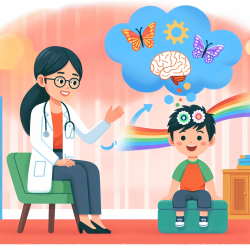The Power of Positive Parenting in Shaping Adolescent Brain Development
In the realm of child development, the influence of parenting is profound. Recent research titled Positive parenting predicts the development of adolescent brain structure: A longitudinal study has shed light on how positive parenting practices can significantly impact the structural development of the adolescent brain. This blog explores the implications of these findings for practitioners and offers insights into how these can be applied to improve outcomes for children.
Key Findings from the Study
The study, conducted by Whittle et al., investigated the effects of positive maternal behavior on adolescent brain development using longitudinal structural MRI scans. The research focused on the amygdala, hippocampus, and prefrontal cortex—regions associated with emotional regulation and cognitive functions.
- Positive parenting was linked to attenuated growth in the right amygdala, which is associated with emotional reactivity.
- Accelerated cortical thinning in the orbitofrontal cortex (OFC) and anterior cingulate cortex (ACC) was observed, suggesting enhanced emotional regulation and cognitive processing.
- The study highlighted that positive and negative parenting are not merely opposites on a continuum but have distinct impacts on brain development.
Implications for Practitioners
For practitioners in speech-language pathology and related fields, these findings underscore the importance of fostering positive interactions between parents and adolescents. Here are some practical applications:
- Encourage Positive Interactions: Promote activities that enhance positive parent-child interactions, such as collaborative problem-solving and shared leisure activities.
- Focus on Emotional Regulation: Support parents in developing strategies to model and teach emotional regulation, which can enhance the development of the prefrontal cortex.
- Tailored Interventions: Design interventions that specifically target the enhancement of positive parenting behaviors, recognizing their unique impact on brain development.
Further Research and Application
While this study provides valuable insights, it also opens avenues for further research. Practitioners are encouraged to explore additional aspects of positive parenting and their effects on different brain regions. Longitudinal studies that track these impacts over extended periods could provide deeper understanding and more robust data.
Moreover, integrating these findings into practice involves continuous education and collaboration with parents to implement evidence-based strategies that promote optimal developmental outcomes.
Conclusion
The research by Whittle et al. highlights the transformative power of positive parenting in adolescent brain development. By focusing on fostering supportive and nurturing environments, practitioners can contribute significantly to the emotional and cognitive growth of children. This aligns with our mission at TinyEYE to create positive outcomes for children through data-driven and compassionate care.
To read the original research paper, please follow this link: Positive parenting predicts the development of adolescent brain structure: A longitudinal study.










